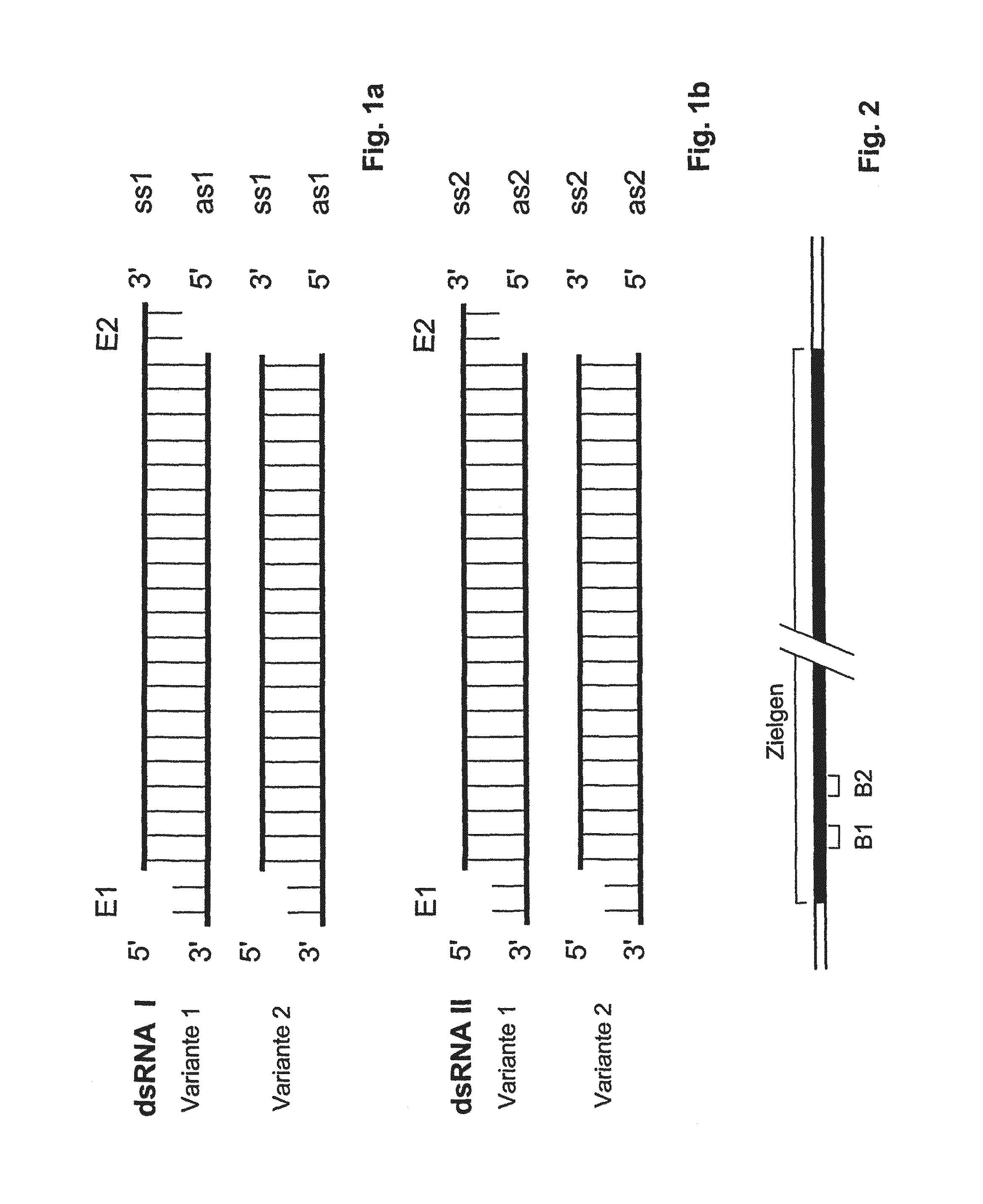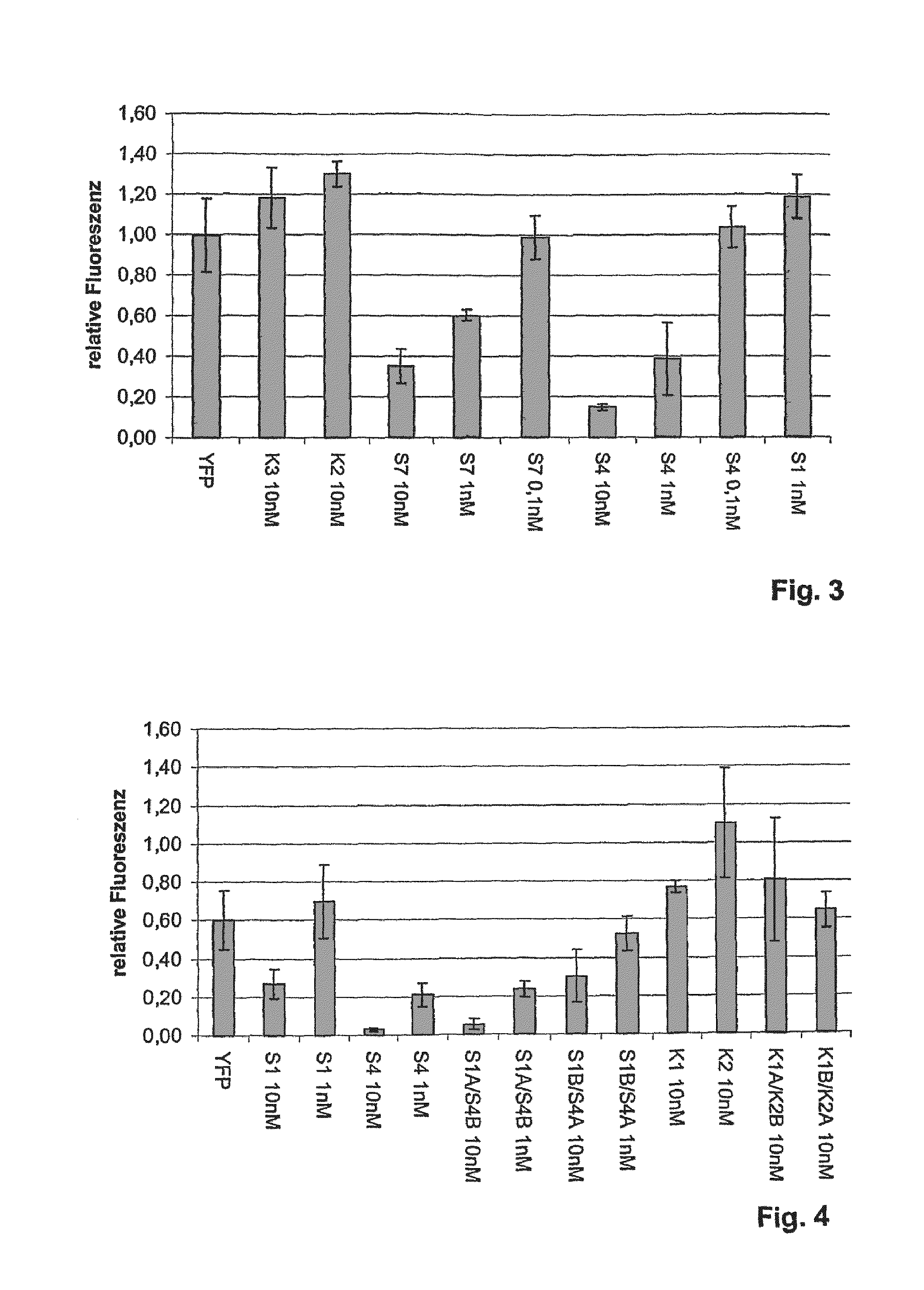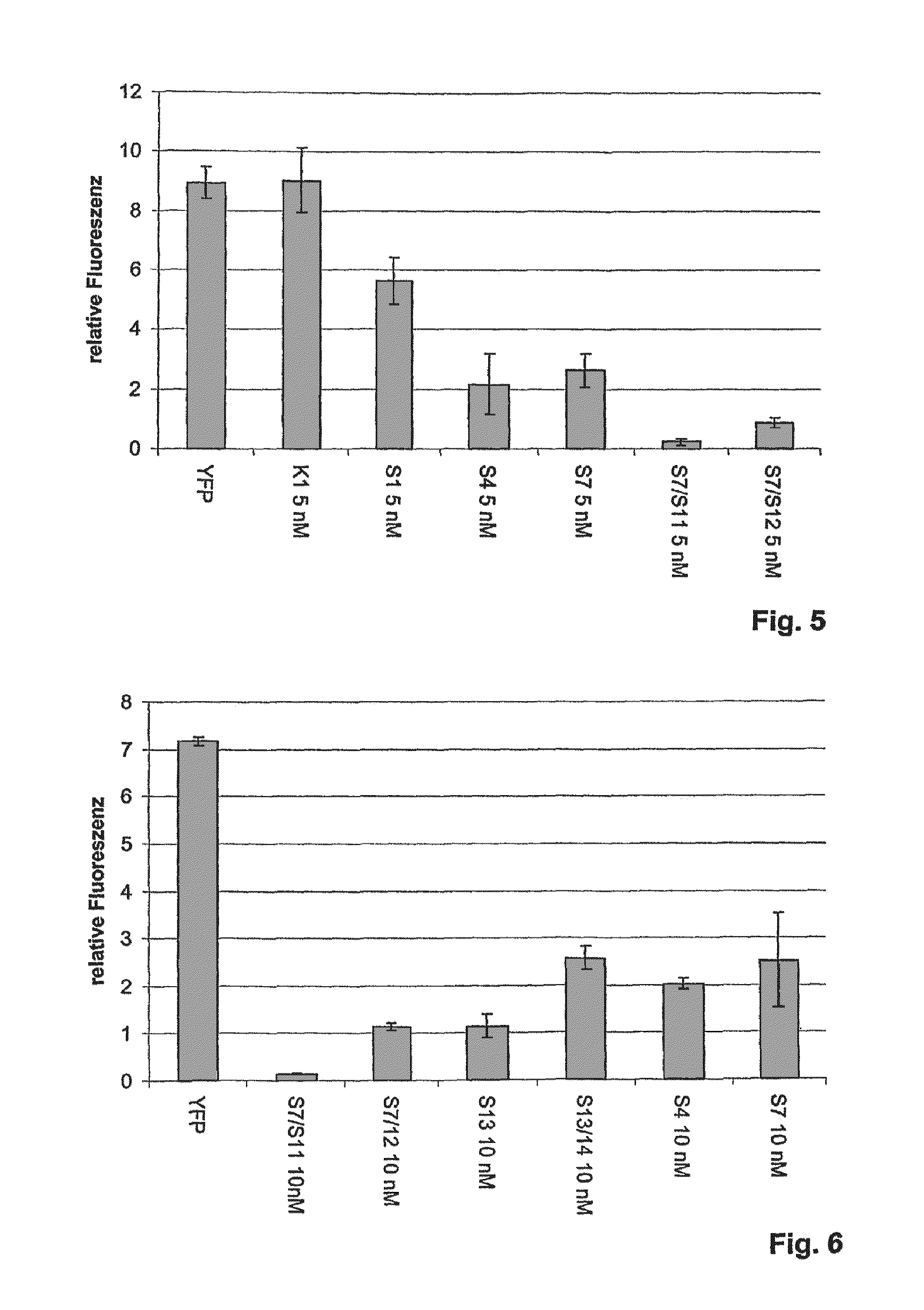Compositions and methods for inhibiting expression of a target gene
a technology target gene, which is applied in the field of double-stranded ribonucleic acid (dsrna), can solve the problems of anti-sense approaches, low efficacy, and inherent limitations of both agents, and achieve the effect of inhibiting the expression of a target gen
- Summary
- Abstract
- Description
- Claims
- Application Information
AI Technical Summary
Problems solved by technology
Method used
Image
Examples
example 1
RNA Interference in a Mouse Mode
[0091]In this Example, double stranded siRNAs are used to inhibit GFP gene expression in transgenic mice.
Synthesis and Preparation of dsRNAs
[0092]Oligoribonucleotides are synthesized with an RNA synthesizer (Expedite 8909, Applied Biosystems, Weiterstadt, Germany) and purified by High Pressure Liquid Chromatography (HPLC) using NucleoPac PA-100 columns, 9×250 mm (Dionex Corp.; low salt buffer: 20 mM Tris, 10 nM NaClO4, pH 6.8, 10% acetonitrile; the high-salt buffer was: 20 mM Tris, 400 mM NaCIO4, pH 6.S, 10% acetonitrile. flow rate: 3 ml / min). Formation of double stranded siRNAs is then achieved by heating a stoichiometric mixture of the individual complementary strands (10 M) in 10 mM sodium phosphate buffer, pH 6.8, 100 mM NaCl, to 80-90° C., with subsequent slow cooling to room temperature over 6 hours,
[0093]In addition, dsRNA molecules with linkers may be produced by solid phase synthesis and addition of hexaethylene glycol as a non-nucleotide lin...
example 2
Inhibition of EGFR Gene Expression with Effort-Specific siRNA
[0114]The epidermal growth factor (=EGF) receptor (=EGFR) belongs to the tyrosine kinase receptors, transmembrane proteins with an intrinsic tyrosin kinase activity that are involved in the control of a series of cellular processes such as cell growth, cell differentiation, migratory processes, and cell vitality (reviewed in: Van der Geer et al., 1994). The EGFR family consists of 4 members, EGFR (ErbB1), HER2 (ErbB2), HER3 (ErbB3), and HER4 (ErbB4) with a transmembrane domain, a cysteine-rich extracellular domain, and a catalytic intracellular domain. The EGFR sequence, a 170-kDa protein, was first described by Ullrich et al., 1984.
[0115]EGFR is activated by peptide growth factors such as EGF, TGFα (transforming growth factor), amphiregulin, betacellulin, HB-EGF (heparin binding EGF-like growth factor), and neuregulins. Ligand binding induces the formation of homodimers or heterodimers with subsequent autophosphorylation ...
example 3
Efficacy of Inhibition of EGFR Gene Expression
[0116]To test the effectiveness of dsRNA for the specific inhibition of EGFR gene expression, U-87 MG cells (human glioblastoma cells), ECCAC (European Collection of Animal Cell Culture) No. 89081402 were transfected with the specific anti-EGF-receptor-directed dsRNA (SEQ ID NO:51). After approximately 72 hours of incubation, the cells were harvested, the protein was isolated, and EGFR expression was analyzed by Western blot.
Test Protocol:
Synthesis and Preparation of dsRNAs
[0117]Oligoribonucleotides were synthesized with an RNA synthesizer (Expedite 8909, Applied Biosystems, Weiterstadt, Germany) and purified by High Pressure Liquid Chromatography (HPLC) using NucleoPac PA-100 columns, 9×250 mm (Dionex Corp.; low salt buffer: 20 mM tris, 10 mM NaClO4, pH 6.8, 10% acetonitrile; flow rate: 3 ml / min). Formation of double stranded siRNAs was then achieved by heating a stoichiometric mixture of the individual complementary strands (10 M) to 9...
PUM
| Property | Measurement | Unit |
|---|---|---|
| concentrations | aaaaa | aaaaa |
| weight | aaaaa | aaaaa |
| weight | aaaaa | aaaaa |
Abstract
Description
Claims
Application Information
 Login to View More
Login to View More - R&D
- Intellectual Property
- Life Sciences
- Materials
- Tech Scout
- Unparalleled Data Quality
- Higher Quality Content
- 60% Fewer Hallucinations
Browse by: Latest US Patents, China's latest patents, Technical Efficacy Thesaurus, Application Domain, Technology Topic, Popular Technical Reports.
© 2025 PatSnap. All rights reserved.Legal|Privacy policy|Modern Slavery Act Transparency Statement|Sitemap|About US| Contact US: help@patsnap.com



